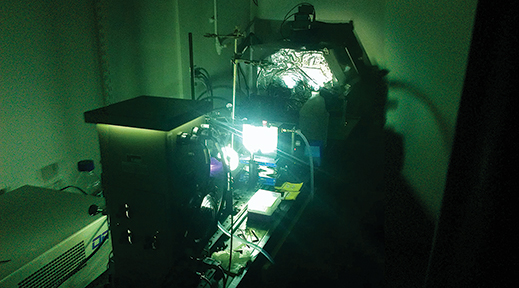Researchers at MIT and Harvard have found an ingenious solution to one of the biggest challenges in harnessing solar power: what do you do when the sun doesn’t shine?

The team has developed a material that can absorb the sun’s heat and store that energy in chemical form, ready to be released again on demand. This solution is best suited for applications where heat is the desired output—whether for heating buildings, cooking, or powering industrial processes.
“It could change the game, since it makes the sun’s energy, in the form of heat, storable and distributable,” says Jeffrey Grossman, an associate professor of materials science and engineering, who worked on the project with Timothy Kucharski, a postdoc at MIT and Harvard.
The principle is simple: some molecules, known as photoswitches, can assume either of two different shapes, as if they had a hinge in the middle. Exposing them to sunlight causes them to absorb energy and jump from one configuration to the other, which is then stable for long periods of time. But these photoswitches can be triggered to return to the other configuration by applying a small jolt of heat, light, or electricity—and when they do so, they give off the absorbed energy as heat.
In effect, they behave like rechargeable thermal batteries: taking in energy from the sun, storing it indefinitely, and then releasing it as needed.
This is a follow-up to a computer analysis that Grossman and his team did three years ago; they have now translated that theoretical work into a practical material in the lab.
In the latest research, Grossman and colleagues attached the photoswitch molecules to carbon nanotubes. They couldn’t get the photoswitching molecules as close together as they did in their computer simulation, but surprisingly, it still worked. The researchers found that because the molecules protruded from the sides of the nanotubes like the teeth of a comb, they were interleaved with those attached to adjacent nanotubes. The interactions between these neighboring photoswitches gave the material its remarkable energy-storing properties, Kucharski says.
The research, described in the journal Nature Chemistry, opens up a wide range of possible materials for optimizing heat storage, Grossman says. He adds that unlike fuels that are burned, this system produces no emissions and relies on material that can be repeatedly reused.
Keep Reading
Most Popular
Large language models can do jaw-dropping things. But nobody knows exactly why.
And that's a problem. Figuring it out is one of the biggest scientific puzzles of our time and a crucial step towards controlling more powerful future models.
The problem with plug-in hybrids? Their drivers.
Plug-in hybrids are often sold as a transition to EVs, but new data from Europe shows we’re still underestimating the emissions they produce.
Google DeepMind’s new generative model makes Super Mario–like games from scratch
Genie learns how to control games by watching hours and hours of video. It could help train next-gen robots too.
How scientists traced a mysterious covid case back to six toilets
When wastewater surveillance turns into a hunt for a single infected individual, the ethics get tricky.
Stay connected
Get the latest updates from
MIT Technology Review
Discover special offers, top stories, upcoming events, and more.